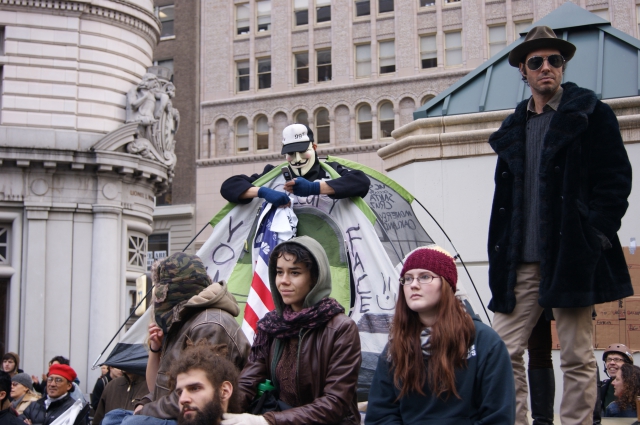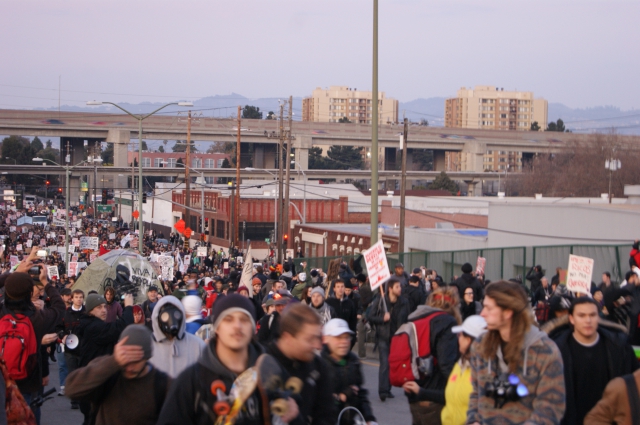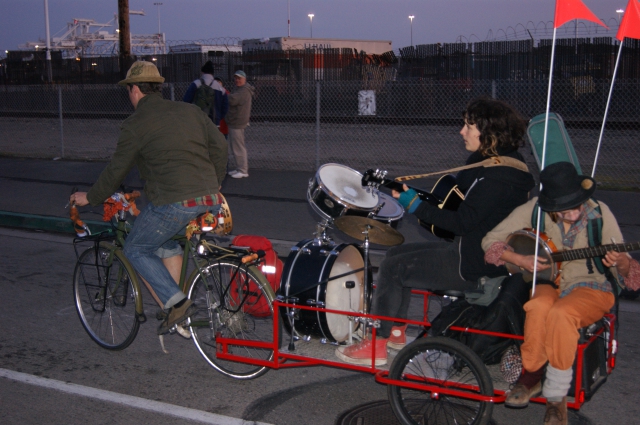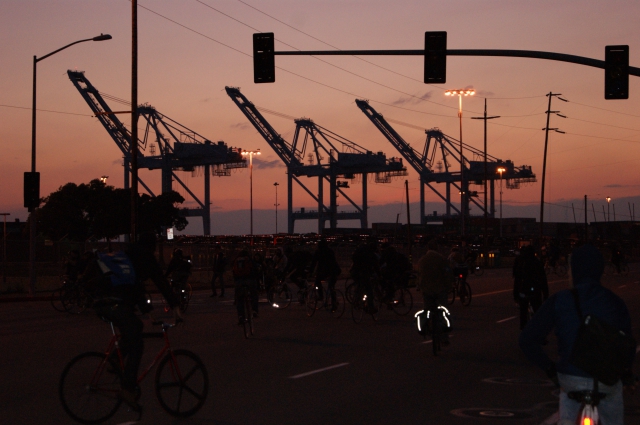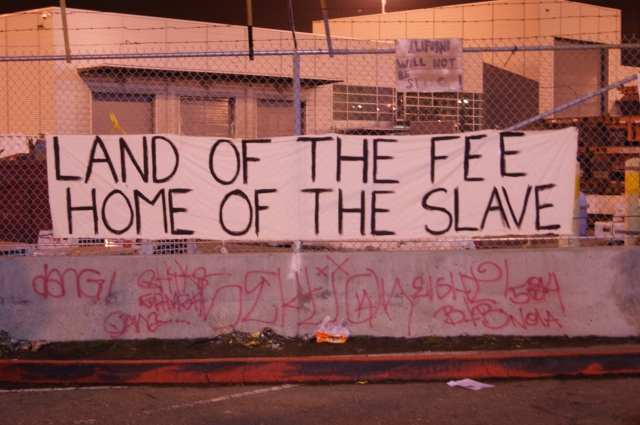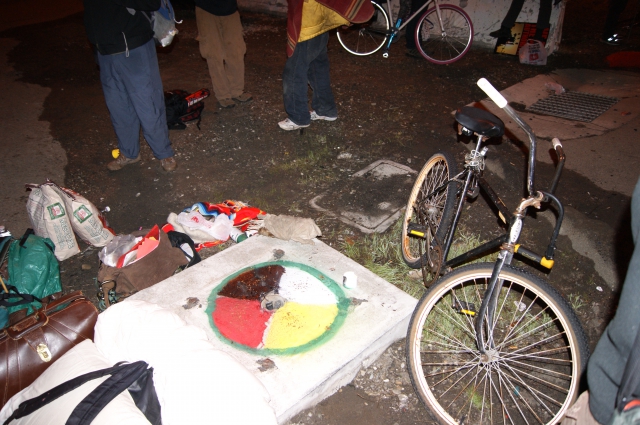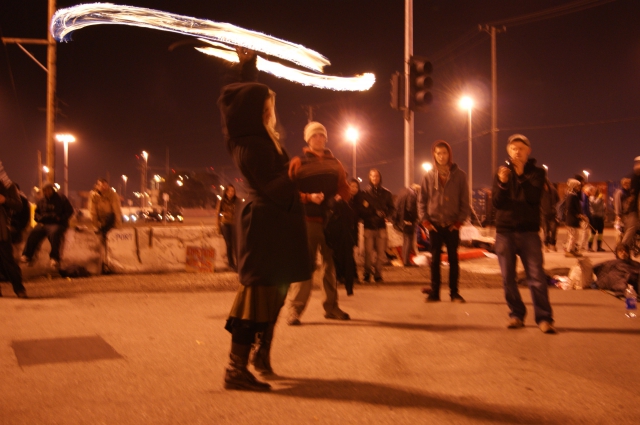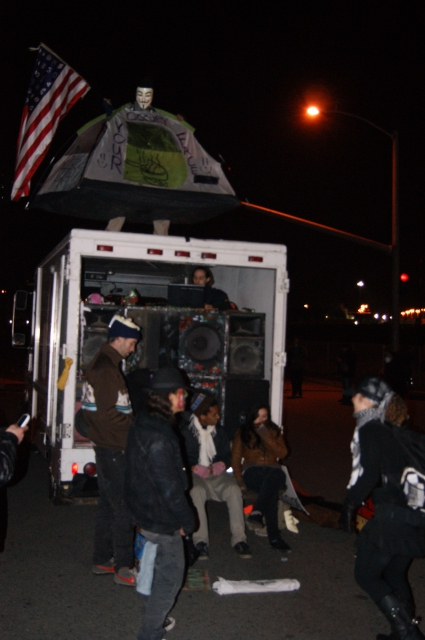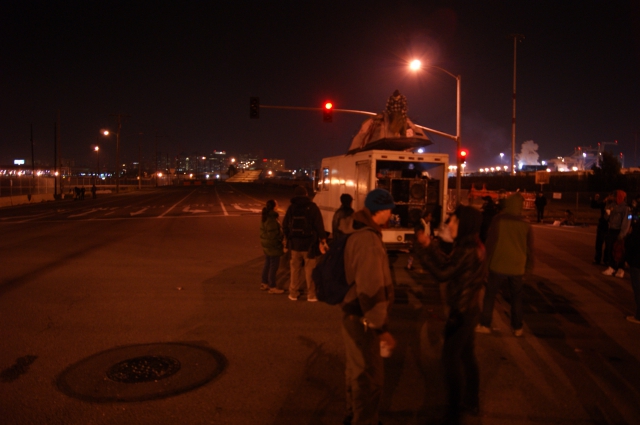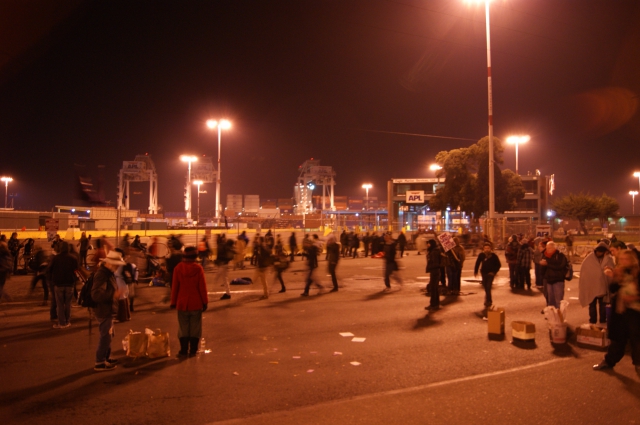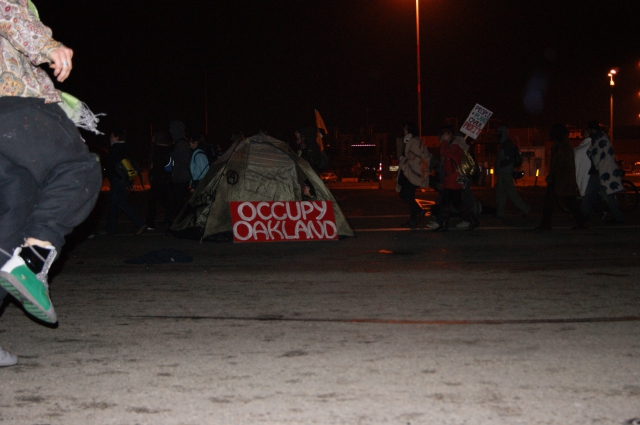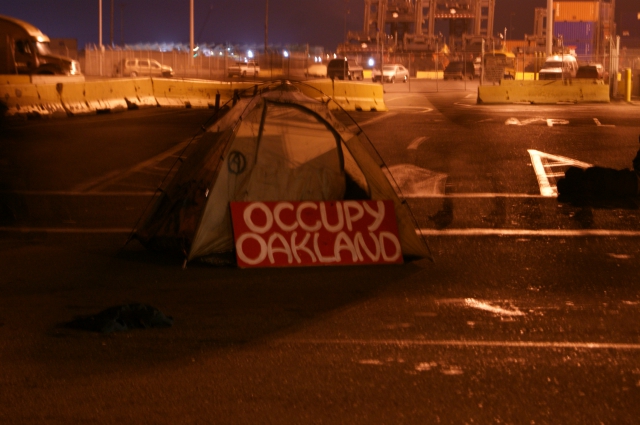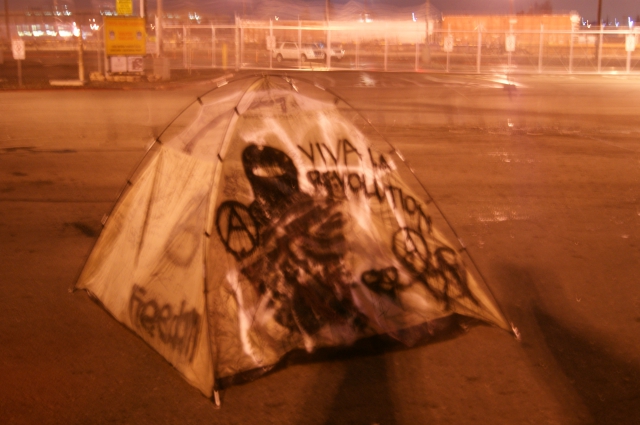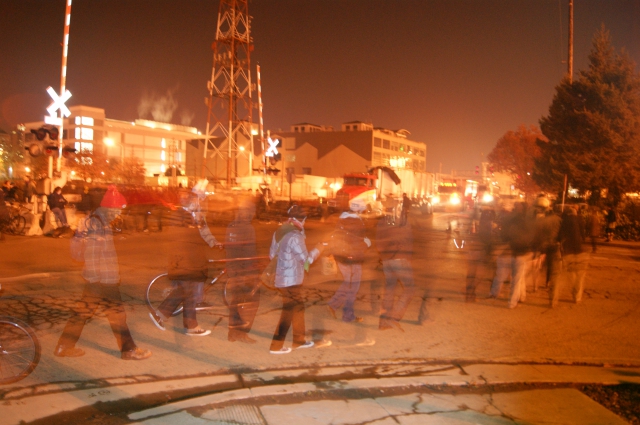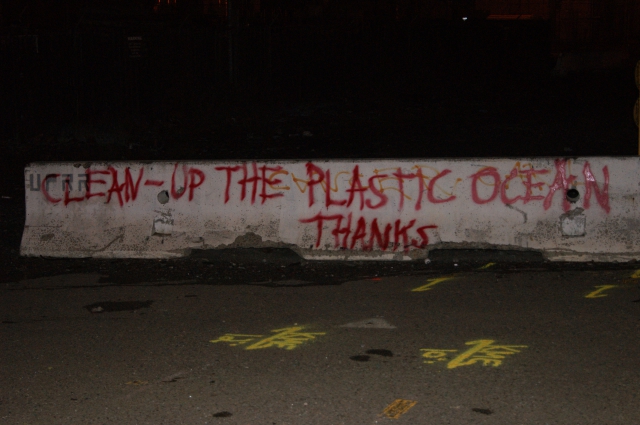Darin Allen Bauer
Sfai, CS 502 1
SP09
Frank Smigiel
Reassessment Of The Merging Of Celestial Conceptual Formation: A Brief Examination Of The Meta-Physics Of Robert Smithson And Contemporaries.
Smithson begins by advancing the modernist notions of space, science, entropy and fabrication as a new form of found object. He describes an egress within the world of art in 1965 that might merely be a stage in modern art, or his lack of awareness regarding Rauschenberg. Drag racing seems to have indeed destroyed the happening, even though it may have inadvertently helped to propel the civil rights movement in Southern California, even if by defacto aggravation to police and authority figures there. A man of science Smithson professes to being an expert mineralogist. Regardless of science there is no there in the new monuments. Smithson introduces us to Dan Flavin and the instant monument, and I am reminiscent of the static conceptual monument or what I call Dan Graham’s conceptual perspective mind-fuck. Smithson then leads us to conceptual utopianism via astral travel and also, again with the influence of Dan Flavin we are reminded of the relevance of the youth of today. Continuing with entropy as a major theme of Monumentalism, we also examine yesterday’s sense of the futuristic landscape. Thanks to Marshall McLuhan we find the hypnotic state of mechanism. Also we find that very early on Robert Moses and Jane Jacobs should of in fact have been major competitors in Olympic table tennis. Meanwhile it is not difficult for the artist to imagine that fewer black and white films might exceed the essential entropic value of L’Chien Andalusian. Should beer and dogfood stains appear on a wife beater 100% cotton made in America t-shirt in a contemporary fine art showcase, who would we assign the accreditation to? [Although in after thought; first Fridays may have solved that dilemma.] To be fair Smithson re-appreciated [de-appreciated?] suburbia long before Frank Black or Kim Deal of The Pixies did. Perhaps we would be wise to listen to the cacophonic sounds of The Pixies when we contemplate entropy and hyperbolic hypnotic motion in regards to early contemporary performance, or perhaps the pre-happening, although only female radiologists should wear a lead brassiere. To further a historic sense of perspective I have included a section describing McCarthyist Dogma, where Robert Smithson meets Mike Davis, although Godzilla does not in this case meet Moth-ra. [Apologies to Moth-ra!] Dissention aside, the tragic death of Pee-Wee Herman’s Sea-Monkeys helps us keep track of minimalist qualities of Monumentalism. Upon further scientific analysis within dissemination of Robert Smithson leads us somehow finally to Helen Molesworth. I round up the essay with a brief examination of science fiction as popular culture rather than science, premonition, or theory.
Smithson was very much drawn to the worlds of the aliens. Quick Millions, reminds us of the silhouette of a Romulan bird of prey star cruiser. I don’t actually wonder that members of the Funk Art movement sat around together smoking pot and conceptualizing on Star Trek and the possibilities of the future. Smithson’s examination of Donald Judd brings this to light with Judd’s study in boxes, which to Smithson suggests a giant crystal from another planet. Smithson’s own Untitled would seem to be related to the likeness of a Cardassian replicator. Moving beyond conceptual fabrication the Funk school of Smithson would seem to revolve around trips to the warehouses of machinists who fabricate alloy or plastic into specific shapes and functionality. Although that may be so it turns out that both Judd and Smithson were amateur mineralogists. This also leads us toward Smithson’s regard of Judd’s The Deposition of Infinite Space. Whatever the case both science and engineering can be found to be associated with imagination and the Star Trek universe. Describing Judd’s work Smithson speaks of matter, anti-matter, inertia, the form of matter, the similarity of architecture to matter, and space. Smith begins his study of entropy in this writing following a dissemination of the connection architecture has on matter and anti-matter.
“A lack of consciousness of mass seems to have caused the demise of “action-painting,” and that might explain also the dissolution of “assemblage” and “the happening.” If action, energy, motion, and other kinetics are the main motives of an artist, his art is quick to atrophy.”
Later in this book Smithson is exploring entropy, I believe atropism to be a good introduction to his caution on the lack of inertia. Action painting reminds us of tribal visual representations, and “the painted stick” from shamanism and also in particular a major character in Tom Robbin’s 1984 Jitterbug Perfume. Local Native American elders have reminded me of the myth of painted stick and how action painting bears a close resemblance to spiritual ritual. Some of us believe that both Pollack and Smithson were killed by the CIA. I am not familiar enough with the art scene in 1965 to formally understand Smithson’s quote entirely, although action paining seems to have vanished during that time of reference. For what might appear to be artistic motivations of hippies, their representation of the celestial did seem too scientific. Expressionism, the comprehension of psycho-analysis, and quantum mechanics all relate to action painting. We might assume that Smithson listened to Jim Morrison and read Aldous Huxley. We do know that things happen in stages, and that 1965, like say 1995, could have had an egress, that summer between episodes of Star Trek, and although all of the above formations of art thrive today, we also know that in our own studios this is not always the case.
I think in the sense of the quarry as an alien formation of terra, Smithson’s description of the rock quarry, and the industrialization thereof, with its drill and cables reminded him of some kind of futuristic landscape. Where some see destruction, artists might see construction.
“Many architectural concepts found in science-fiction have nothing to do with science or fiction; instead they suggest a new kind of monumentality which has much in common with the aims of some of today’s artists.”
Dan Flavin brings to mind the concept of “inactive history,” which leads us back to an initial Smithsonization of inert characterizations. The irony of “energy-drain” as a constant that is more easily obtained can remind us that the cost of nothing isn’t what it used to be. Certainly like everything else it can be assumed that the price of nothing has risen in the last fifty plus years. Ronald Bladen’s Untitled, 1965 feature in a variance of entropic monumentalism. What do the slightly askew geometric shapes indicate? Is it a future site? Is it an alien tombstone? When we consider new architecture I would suggest entitling oneself with such scrutiny. Let’s use the Beijing CCTV structural arrangement by Rem Koolhaus in the same manner. It does seem to indicate that nothing is what it used to be, although it is a monument to capitalism if nothing else. Compared to twenty years ago it would seem to be a future site. If you took indigenous people from the Amazon here, I think they would be scared. Although the monumental waste this structure ultimately entombs, encases, or at least finally would appear to seal entropy on a whole new level. Millions of Chinese may now comfortably sit on their couches. Is the negative space in the building, this vapidity a formal warning by Koolhaus? Is its geometric formation reminiscent of a Borg cube from Star Trek? China has been assimilated it would seem.
New monuments have no sense or placement in time, they are ahistorical, and in the new global capitalism, likewise the new global totalitarianism, the new entropy and monumentalism this would seem to be beneficial only to the leaders of the new regime. Dan Flavin’s concept of the instant monument would seem to encompass the original irony and whimsy of the Dadaist Marcel Duchamp, which exemplifies the reductionist methodology of the ready-made, as an argument for subjectivity, creativity and improbability. At least when comparing conceptual titles as Flavin’s pieces savor the irony and tend to lend themselves towards a structural universality within the confines, and exemplifying the subjectivity of the problem of social totalitarianism in architecture. I prefer Dan Graham’s garden architecture, something that amuses us because it uses the basic formula and premise of conceptual perspective to play havoc on our minds, while at the same time administering a proper dose of utilitarianism in what otherwise would be a non-space. I am reminded of the relevance of Flavin’s kind of genius on a u-tube video courtesy of The Tate London. To use art to look upon the youth of today is also a chance to dismiss pessimism and administer disassociation with contempt for society in general. Members of the late Expressionist movement had already been to the utopia planet, made ideas for the utopia project, and then somehow made their way back to earth and decided to make art instead since that would have been their initial goal before society, and art invented astral travel. That’s one of my theories anyway, and it would at least help begin to explain Futurism, Dadaism, Constructivism, Abstract Expressionism, Situationism, and the like.
“Deliberately low-keyed art often resembles ruins, like Neolithic rather than classical monuments, amalgams of past and future, remains of something ‘more’, vestiges of some unknown venture. The ghost of content continues to hover over the most obdurately abstract art. The more open, or ambiguous, the experience offered, the more the viewer is forced to depend upon his own perceptions.”
In this sense anyway we can imagine visual representations of yesterday’s alien landscape. In the sci-fi world this is known as the paradox of “yesterday’s tomorrows,” or all that is old becomes new again. Although the paradox here is also that we as a species alienate ourselves with our own architecture, dogma, and restrictions so that it becomes the role of the artist to reverse those influences of negativity and help us free our minds from entropy and become more Zen-like and humanistic. Humor and re-appropriation of the nominal seems to be what the late Expressionists are employing. Hiding time within artwork itself and creating secret anomalies of entropy helps us to visualize further exemplifications of the artist’s agenda.
Entropy
“Random blobs of power expressed as that which we all disregard,
ordered states of nature on a scale that no one thinks about, don't
speak to me of anarchy or peace of calm revolt, man, we're in a play
of slow decay orchestrated by Boltzmann, it's entropy, it's not a
human issue, entropy, it's matter of course, entropy, enegery at all
levels, entropy, from it you can not divorce and your pathetic moans
of suffrage tend to lose all significance, extinction, degradation;
the natural outcomes of our ordered lives, power, motivation;
temporary fixtures for which we strive, something in our synapses
assures us we're ok but in our disequilibrium we simply can not stay,
it's entropy..., a stolid proposition from a man unkempt as I, my
affectatious I can not rectify, but we are out of equilibrium
unnaturally, a pang of consciousness at death and then you will agree…”
We can get involved in the argument of form verses content. We can situate ourselves with an action – reaction syndrome and vilify or exemplify the hypnotic state of mechanism. Marshall McLuhan would say that electricity and technology have given us a formal collapse of society. I think automatism creates the torpor that the artists Smithson describes. We need to consider Robert Moses and Jane Jacobs. If a little old lady can take on a civic planner [although civil to whom is a question of considerable theory] and power oligarch such as Moses, then no wonder then, with the war on Vietnam and so on, that this early funk movement would question the military industrial complex in which they had become capsized. We can remember the display in the Union Carbide building of Atomic Energy In Action as a form of fascist propaganda. We can get stoned and watch The Queen of Sheba Meets the Atom Man, and giggle and laugh the same way we did when we watched Reefer Madness, or lament that neither are as good as L’Chien Andalusian. Flavin describes such places [that which seems to indicate the post-industrial] as without value of qualities, or an undistinguished form of architecture. At the same time he can humorously describe the holistic values as dictated to us by capitalist consumerism. Soap is ninety-nine and a fraction of a percent pure, beer has more spirit, dog food is at least the most nutritious, yet as humorous as it may seem to appeal, these facts are in themselves banal and infinitesimally entropic.
Smithson cites “the Slurbs,” and quotes Roy Lichtenstein describing all within sluburbia as; “a lot of visible things,” that are “bland and empty.” Smithson then goes on to describe qualities that very much puts us to mind with Jane Jacobs’s description of what is wrong with modern cities, urban sprawl being a problem compatible to both the urban and sluburban. The insipid dullness of the slurbs which will much later in the 20th Century become the source of revility to punk, slacker, or grunge is the same source of inspiration to the late Expressionists. Smithson identifies the industrialization of the slurbs as the source of infinite wisdom to Smithson and his contemporaries. All of the structure, the conformity, manufacture of simulacra, and the hyperbolic tendencies of capitalist consumerism is both the muse and the target mechanism in which the late Expressionists rage against.
Robert Morris builds a lead bra for his dance partner Yvonne Rainer to help stop the motion in her dances. I suppose one must have a dense mass of inertia in which to create an impressive amount of motion to begin with. Absurdity being one of those kinds of unique qualities to artists such as Hugo Ball, The Cabaret Voltaire, the early works of Picaba, Breton and Picasso, Schlemmer, and in particular the lead bra seems reminiscent of Schlemmer’s diagram for Gesture Dance, 1926 in that it can provide counterweight velocity, and perhaps hyperbolic hypnotic motion also. Kasimir Malevich describes a “non-objective world,” in which the urban is seemingly a limitless void or desert. Perception in this urban desert has no likeness of reality and becomes deprivation. This does seem like early Constructivism. The lack of something and the depth of its void becomes something like a version of Futurism. In this example nothing has value, although it is easily affordable. [One of my practices is to be able to explain art to economic or business majors who believe that their challenge to do so would defy artists or art itself as a sub-typical genre of the inane, which can be subverted by explaining that nothing (literally) is explained by art in terms of the actual value of nothing. As I have done so in previous pages.] In other words art can be used to explain the current value of nothing. That could go on to an argument for tribal cultures because such cultures are responsible for the infusion of the concept of zero, “0,” into our current mathematics which in turn is also an active argument for spiritual ritual and art such as that of dada and the likes of Schlemmer, the Bauhaus festivals and The Cabaret Voltaire certainly at least tried to correspond to a sense of future primitive. Because of this kind of argumentation of course, artists have game. Once in a while, at galleries and openings we get a chance to pimp out, which is a great opportunity to behave nefariously.
Another immediacy of the nefarious would again be the industrialization of the slurbs. Los Angeles is nothing other than an overgrown suburban landscape, and has never really been more than that, physically, esthetically, etc. No landscape therefore can be more completely at odds with utopianism in the current sense, and Los Angeles to the late Expressionists must therefore be considered the pinnacle of the mundane. In Mike Davis’s City of Quartz, the best description of Los Angeles is given as a quote by Edward Soja.
“One can find in Los Angeles not only the high technology industrial complexes of the Silicon Valley and the erratic sunbelt economy of Houston, but also the far reaching industrial decline and bankrupt urban neighborhoods of rustbelt Detroit or Cleveland. There is a Boston in Los Angeles, a Lower Manhattan and a South Bronx, a Sao Paulo and a Singapore. There may be no other comparable urban region which presents so vividly such a composite assemblage and articulation of urban restructuring processes. Los Angeles seems to be conjugating the recent history of capitalist urbanization in virtually all its inflectional forms.”
The Smithson and the pre-funk, late Expressionist cry against the banalities of modernism seem to be synchronous with a general area of study by Mike Davis. When we think of the 1960s we often think of the movie American Graffiti, and automotive culture. What is less understood is that the riots caused by police enforcement of drag racing in the early to middle 1960s in San Diego and Los Angeles were also happening at the same time as riots due to racial tension in the same areas. Although the riots in Watts are generally accepted as predecessors to the civil rights movement, popular dissent of the youth, along with several years of insurmountable and previous decades worth of racial discrimination by police authorities also contributed to the dissatisfaction of the populace in America. Another thing to remember is that like the later 1960s in Paris the revolution was also much wilder, more pronounced and largely more accepted by the populace. This wasn’t just in Europe and American; revolution took place elsewhere in the world also, so the world of Smithson and his contemporaries was also a very unhinged world. Ultimately although the Soja quote is from 1989, if we look at Mike Davis’s As Bad as the H-Bomb chapter, in his book Dead Cities, we find that the late Expressionists or pre-Funk movement was very angry with society actually, and that Soja’s quote could simply be a more current assessment of the larger dangers of globalization and McCarthyism. Globalization creates global insurgency.
Dissention aside, the minimalist qualities of Monumentalism, if it was such a thing, are indicated by Smithson as being more comprehensive when they are in the formation of usage that seems to create the most entropy. This must be the last undying irony of Smithson’s generation. In the Smithson are used examples from Forrest Myers, E13, 1965, John Chamberlain, Conrad, 1964, also I will consider Paul Thek’s, Hippopotamus. All of these illustrated examples seem to conspire for the usage of entropy as formations of anti-entropic awareness. Myers work would actually seem to imitate that of Alexander Calder, and that of a telephone, possibly of an alien design. Chamberlain uses objects from the industrial post-modern façade, [auto paint, Formica, and chrome] to indicate the auto-industry and a formalist structure signifying adjacent synchronous perpendicular redundancy. Chamberlain’s Conrad, 1964, actually seems to realize the drag racing riots in Southern California with some distinction. A major theme shared by the Monumentalists is that entropy is time or evolution in reverse. We must stop and remember also that Darwinism was not widely regarded as an absolute in Smithson’s day either. Paul Thek’s Hippo… would seem to be a test-tube steak made in an aquarium like Sea Monkey’s, possibly another intellectual jibe against gearheads (meatheads,) or perhaps simply indicating the villainy of the USDA. Smithson’s Cryoshpere,1966, Dan Flavin’s November 1964 Installation, and Robert Grosvenor’s 1965, Transaxiana all look like props from the original Star Trek series and also meet or exceed all criteria of what might be considered Monumentalism, which is to say that they exemplify and perfect the conceptual consignment of that of nothing with amazing perfection. I wanted to put together a harmonic convergence of art, urbanism and the alien with the following quotations.
“This City (I thought) is so horrible that its mere existence and perdurance, though in the midst of a secret desert, contaminates the past and future and in some way even jeopardizes the stars.” – Jorge Luis Borges, The Immortal.
“Tromaderians consider anything blue extremely pornographic.” – Peter Hutchinson, Extraterrestrial Art.
“But with the near-instantaneous time-to-market from margin to Megastore (or from Small-grid to Big-grid), how much subversion or resistance can subcultures offer? … In general terms visual studies might be too quick to dismiss aesthetic autonomy as retrograde, and to embrace subcultural forms as subversive…Such a weird array of things is not the stuff of a renewed medium; on the contrary, it is part of the Surrealist project to “explode” conventional categories of cultural objects. In this way it presumes a reified tabulation of artistic mediums to disrupt – which, as argued elsewhere in this book, is precisely not our problem.” Hal Foster, Design and Crime: And Other Diatribes.
Borges considers the urban to be the enemy of the stars, bringing the mechanisms of ecological destruction into a renewed consideration. Hutchinson is obviously a Starfleet attaché to Tromaderia. Hal Foster has some things to say about resistance while at the same time making considerations regarding the phantasmagorical of trends in transnationalism, and allowing us considerations within visual studies. Helen Molesworth notes in Work Ethic that 1960s artists leaned toward a “Death of the Author” consideration, which I think Joseph Campbell would simply regard as the art maker’s intentional incentive to remove ego from the process of art or object making. There is an interesting engagement between the artist and the art given that particular context. Molesworth quotes Barthes saying that, “the birth of the reader must be at the cost of the death of the author.” I seem to remember from my own classical training that initially upon review of the classics and contemporaries that my own work became much much worse. I think on this topic, and also given the consideration of artwork in the age of mechanical reproduction, like Lt. Commander Data’s holographic card games with Newton, Steven Hawkings and Einstein, etc, from Star Trek: The Next Generation, I believe I would more like to play a similar deck or two with Molesworth, Campbell, and Foster, if only to understand the fundamentals of their considerations on anti-authoritarianism, and how this would seem to relate to art and the world at large. I think I’ll save that one for you Frank, except I seem to remember you are not a gambling man. Neither am I. I make a vague although comprehensible claim, earlier in this essay that the contemporaries of Smithson had already accomplished the bohemian or utopian ideals of artists in general, although I do make the distinction that astral travel may have been the cause, and further I elude to Roddenberryism (as usual,) before moving on to urban studies with Mike Davis. In Molesworth’s Work Ethic, her variation on utopianism and urban studies includes a quote from Michael Hardt and Antonio Negri’s Empire.
“This utopianism was made possible, in part, through the widespread social upheavals of the 1960s-rebellions that, in the words of Michael Hardt and Antonio Negri in Empire, created a “massive transvaluation of the values of social production and production of new subjectivities [that] opened the way for a powerful transformation of labor power.” Yet the 1960s may have been the end of one historical phase and the slow beginning of another. Empire contends that late capitalism is on the wane, as nation-based economies are being supplanted by a globalized economy and the postindustrial service economy is becoming an information economy.”
Previous to the section in Molesworth, she is speaking of post-industrial labor, which she then sites Duchamp, Gilbert and George, and Tom Marioni. The relationship here is that leisure should encroach on labor and not the other way around. She goes on to distinguish the definition of labor, which could seem by some to be a notably Marxist consideration, although she doesn’t consider that the idea of the “information age,” or that the “information economy,” is a variation of the police state. In short I believe that the cost of industrialized information would seem to be industrialized segregation, seclusion, spying and surveillance, and that she is largely understating this problem. So although I understand Molesworth relating artists such as Sol LeWitt, Donald Judd, John Baldessari, and Yoko Ono to a more conceptual bearing, regardless of their personal usage of the division of labor, and I am great-full for the Post-World War influx of academic artists as she had cited from Howard Singerman, I feel that she comes across merely restating a more popular version of Clement Greenberg, while not giving enough credence to the eminent dangers of Taylorism in today’s thoroughly repressive transnationalism. She does give a better variation than Greenberg in many ways and gives an altruistic glance at a chapter of art history, and the socio-economic conditions that the late Expressionists worked through. She does support the ironic tongue and cheek variances within late Expressionism and she also uses the work of Herbert Marcuse to describe the conditions of sexual liberation and leisure in the middle twentieth century as a consideration against voyeurism as a traditionally sexist behavior within the art world. That ends my only section of Molesworth and my ability to compare her to Smithson and his contemporaries.
Smithson relates Thek and Thek’s specific contemporaries in a type of representational sub-genre of gore to William S. Burroughs’ Nova Express. Smithson notably does not relate the gore sub-genre to the 1960s film, The Forbidden Planet, which I feel more thoroughly represents Monumentalism, and the film genre he is using to compare to the gore artwork of Thek and his contemporaries. It’s like boys and comic books. I thought they should go for the graphic novel so to speak, so I was disappointed by Smithson’s incomplete analogy. The Day The Earth Stood Still, for example is definitively monumental, and also monumentally boring. The Thing, and The Creature From The Black Lagoon, are both okay, with more contemporary versions slightly more interesting. The artwork in itself is not B-movie quality, but does retain a similar classic ethos. Most of the artwork that I have had forms of exposure to from the Monumentalist “Gore” sub-genre would literally seem to be straight out of the Vulcan Science Academy. I have already described Thek’s Hippopotamus; I feel that most of that specific sub-genre of gore Monumentalism is actually simply kind of gross. I share the wonderment and vulgar fascination like most viewers who do appreciate it as a contemporary object formation, at the same time I do not wish to consider alien variations on vivisection. The Time Machine, and War Of The Worlds at least give into some resemblance of imagination and can give some sophistication or old world laboratorial effervescence to some of the kinds of suggestive imagery that I believe Thek and his contemporaries in the “gore” sub-genre were trying to achieve. What I really dislike is how that particular generation might distain low-brow culture, Robert Williams, Coop, and so on, who are considered a sub-genre to late Expressionism certainly have earned their notoriety, while Thek, (et al) seem to desperately cling to the idea of the classic exhibition, when possibly they would have been better off working with the likes of Edward J. Wood, or even Gene Roddenberry himself.
What contradicts the “gore” passage in Smithson are the two photographs of work by Robert Morris and Peter Hutchinson. Robert Morris words stamped in lead give in to the exciting danger of the artist studio as a place for the glorification of very little. Peter Hutchinson’s work completes another reincorporation into the alien with Silver Highlight. A triangular object placed in a corner of the room, possibly a time portal to another universe, or maybe a broken billiard’s triangle. Neither piece gives any indication of the previous relationship to Thek, or Hutchinson’s attachment to bad movies.
Here we can conclude that something very contemporaneous must have actually happened in the 1960s that lead to such an influx of cosmic considerations. The 2009 film A Single Man, by George Falconer, which is based on the novel by Christopher Isherwood takes place on a single day in 1962. One of the most pronounced aspect of the film is the fact that the home played by the actor Colin Firth, an art deco affair that clashes with his entire suburban neighborhood has another un-commonality. To the trained eye it looks like a secret away station used by Vulcans or Romulans to essentially spy on the home worlds of species that are not yet technologically advanced enough to notice its existence. There is another scene in that film, where a brand new pre-fab liquor store is gloriously bathed in the Los Angeles sunset overlooking the ocean. This gives us, in our current vapid sense of post-modern atmosphere a feeling of loss since we know that in the timeline of the film gentrification is just around the corner, and what seems to be the denser, cleaner and more humid atmosphere of an earlier era is just about to make a complete turn towards the events leading to further McCarthyism.
In the context of Smithson I am reminded what first contact between the Vulcans and the Cardassians must have seemed like. Although we cannot know for certain everything that transpired on the metaphysical level during times of modernist influence, I like to think that they left us clues, or secret instructions if you will which eventually lead to punk, grunge, and other formations of post-modernism and post-industrialism. I have to remember to be patient with Smithson as elements in Monumentalism would pre-date more metaphysical events later in the decade should take place such as the mass of people who encircled The Pentagon, of whom believe they lifted that building a few meters off of the ground. His emphasis of a lack of consciousness of mass from my footnote five, albeit a humanizing look at artistic frustration in our attempt to find commonality with our heroes in art, was premature. Smithson could have visited Native American land in the North American Southwest should he have been concerned with the demise of “action painting.” Robert Rauschenberg was making a turn towards commercial art, so that may have been Smithson’s folly, he may have been inferring that Rauschenberg, and others, were selling out. Although compared with Smithson’s larger projects this seems like a red herring. Again commercialism is also a contemporary sign of success, or simply experimentation. That is to say if you aren’t the most ardent anti-capitalist.
I don’t know if Smithson and Pollack were on the hit list with King, X, Morrison, Hendrix, Cobain, and so many others over the years. I am also afraid to think too much on it.
Soon after its inception in 1987 NPR announced that Star Trek: The Next Generation was the best show on television, period. There could not have been a more universal or appreciated introduction to post-modernism. Using ideas, concepts, and the imagination, having an interest in the sciences, this is what Smithson and his contemporaries searched for in their day. Amazingly enough they did so before the original Star Trek television series occurred. The idea that they are actively pursuant to the causal forces that create torpor and dis-ingenuity in modern society, like going where no one has gone before, is actually awe inspiring. I remember going to school, working on art and listening to punk music by day and watching The Next Generation with friends and family during my heyday in the evenings, (and listening to music in the evenings.) I know that things were no less inspiring for the late Expressionists. Their legacy is interesting. To know that such events transpired prior to the summer of love places Monumentalism in history as a relevant form of political protest against capitalism that actually promotes the theory of stellar universality. That is to say if you believe in the ideas behind quantum mechanics, and the ideas of people like Aldous Huxley, Joseph Campbell, and Gene Roddenberry. Capitalist architecture in particular is repressive and daunting. People like Robert Moses should really, really have been ashamed of themselves. Even though he is a marvel at architecture, Koolhaus does seem to unabashedly approach the design of the status quotient. I wonder if in time that his work does not seem typical, bland, repetitive and demagogic. Dan Flavin kept the faith and his work with children reminds us all of the importance of the fresh perspective. Yesterday’s tomorrow is a never ending theme of re-association. Greg Graffin knew he should never have used the time machine to introduce Boltzmann to slam-dancing. Jello Biafra would say that conservative government policy, Steve Jobs, and Bill Gates has given us the formal collapse of society. [He did.] We all know from experience that the movie Escape From Los Angeles is the overall worst, yet surprisingly this makes it the most entertaining. A formal denial of authorship is a frightening concept. I’m going to dye my hair green again, then I’m going to revisit [hitch-hike to,] the Orion homeworld. If anyone asks I will tell them that Robert sent me. Live long and prosper!
